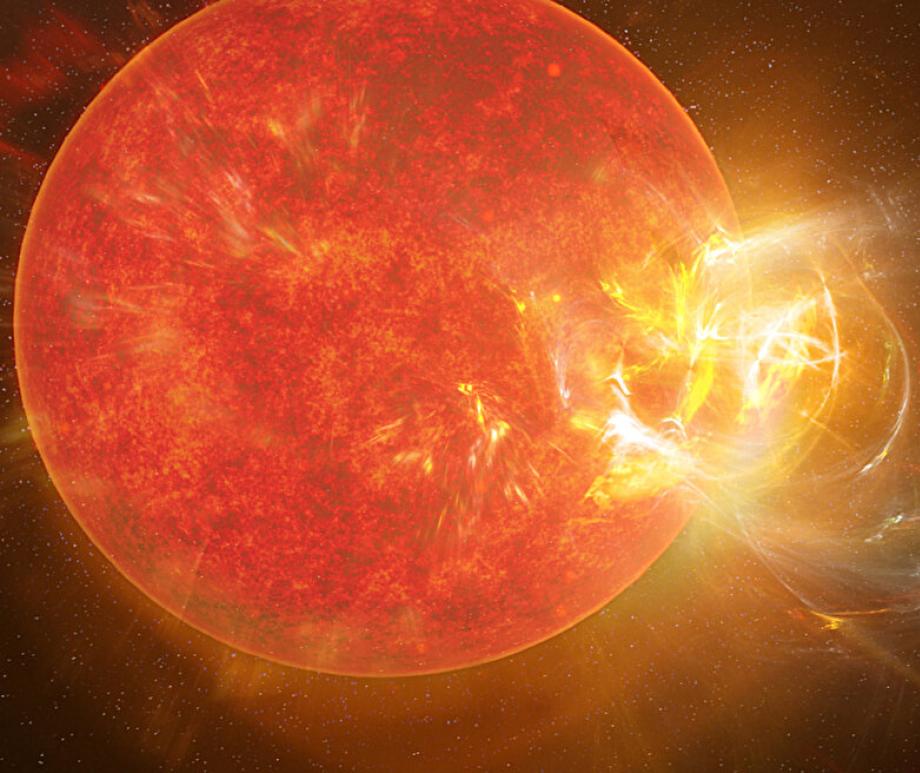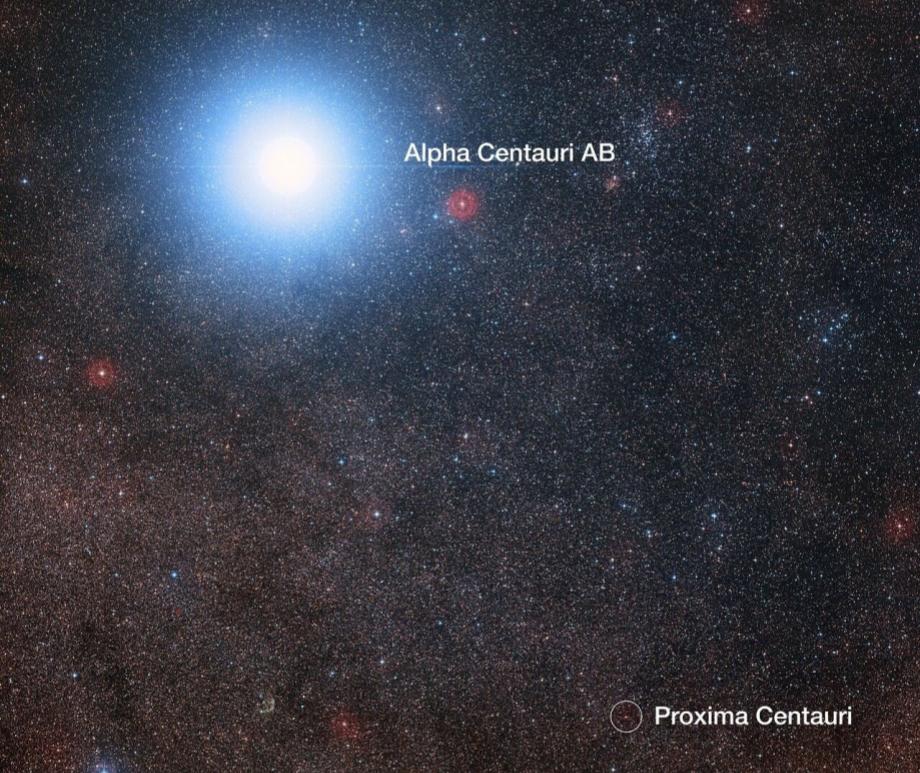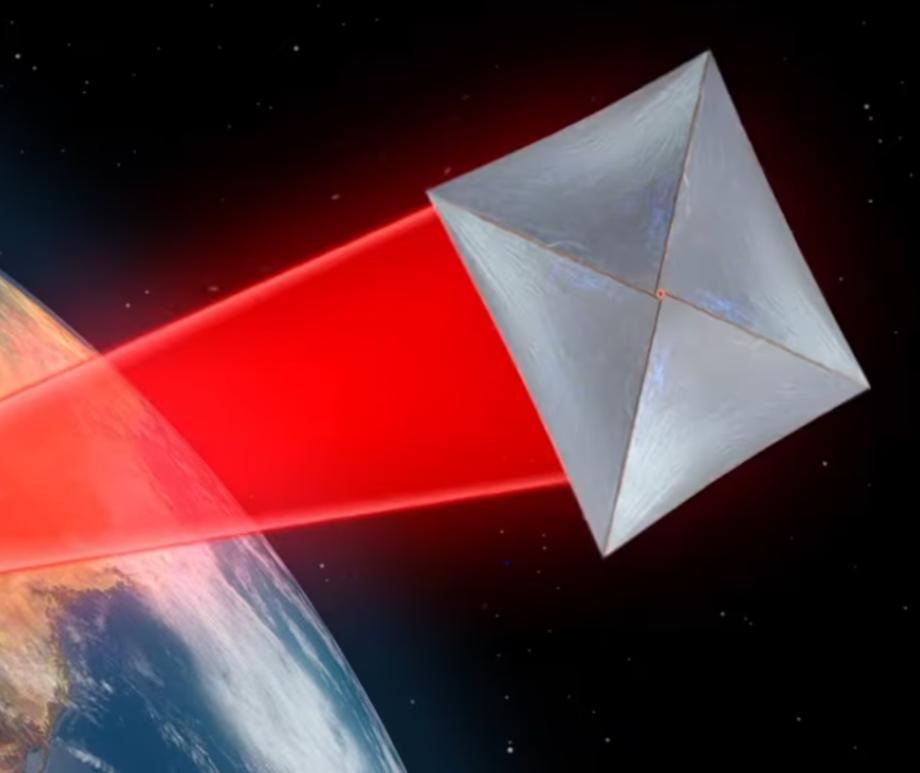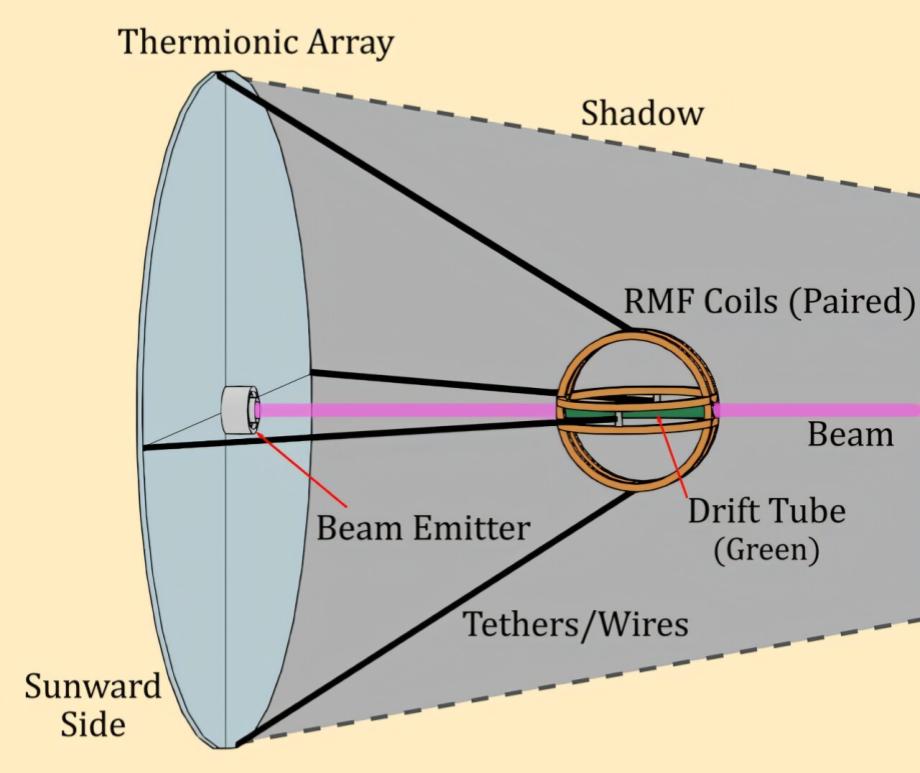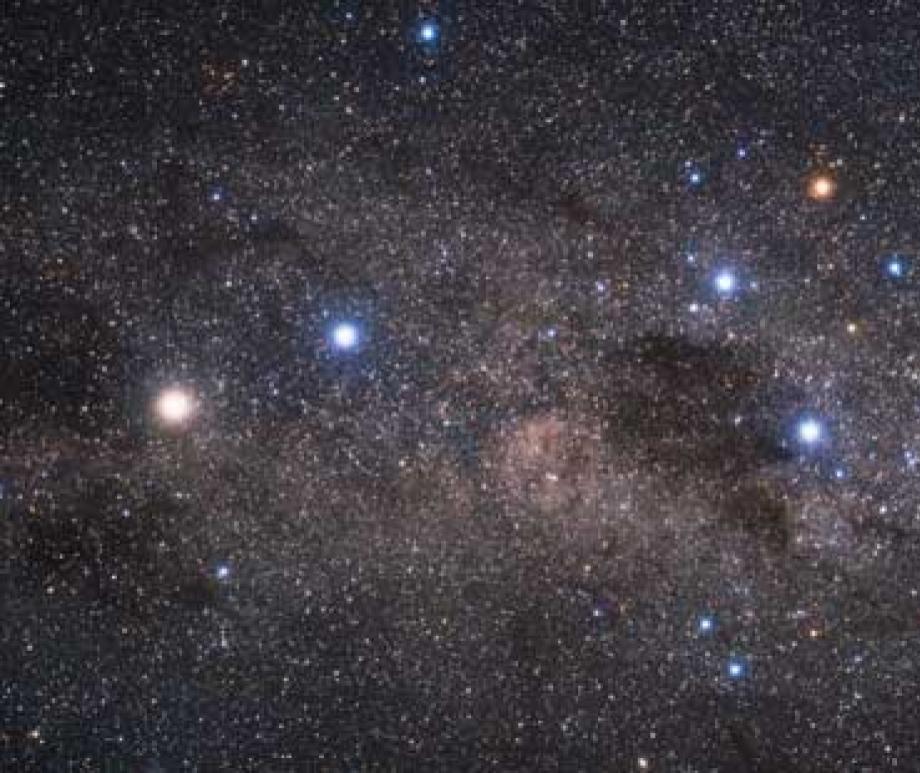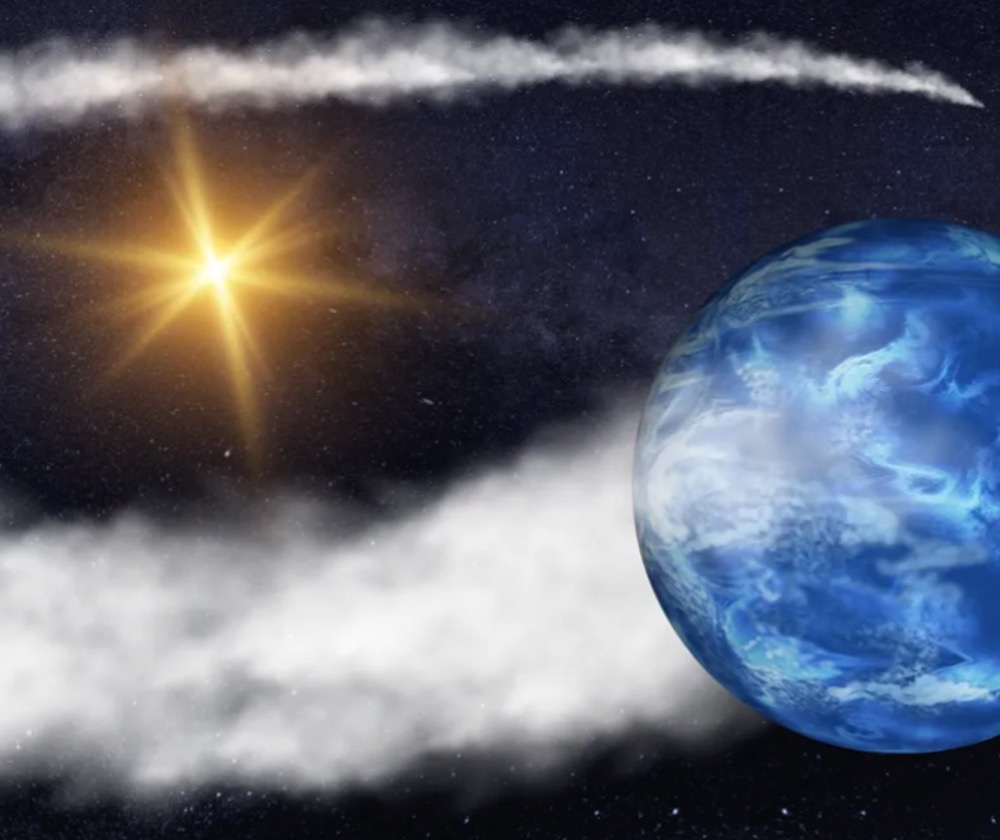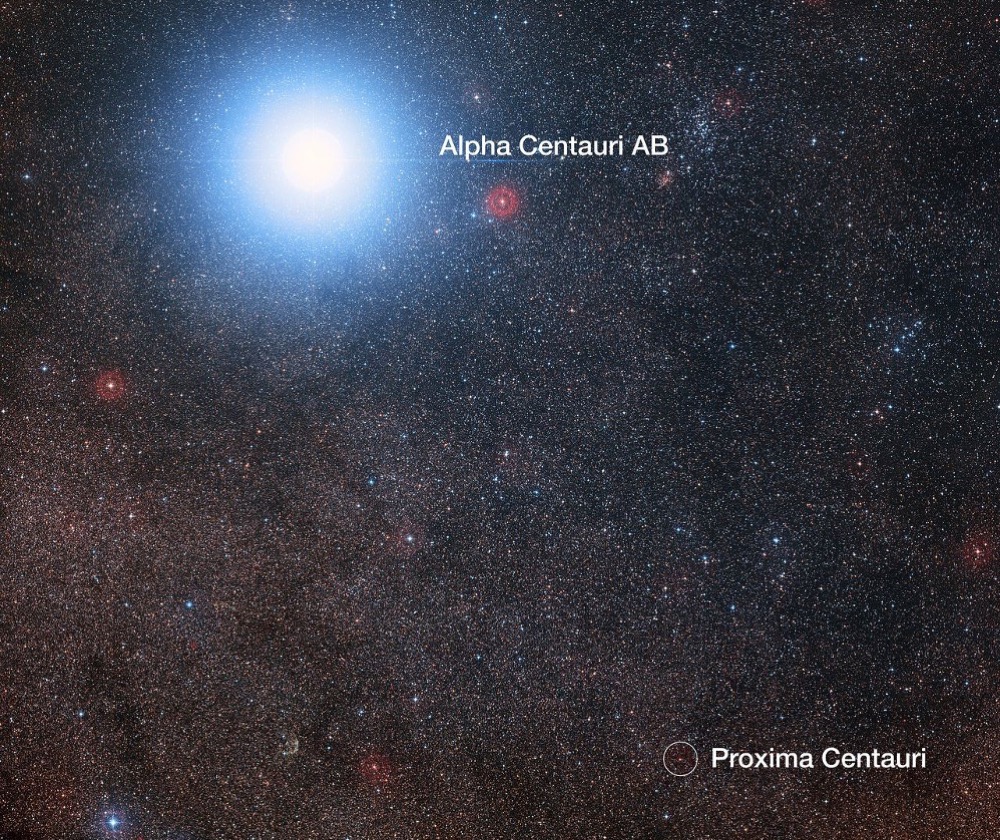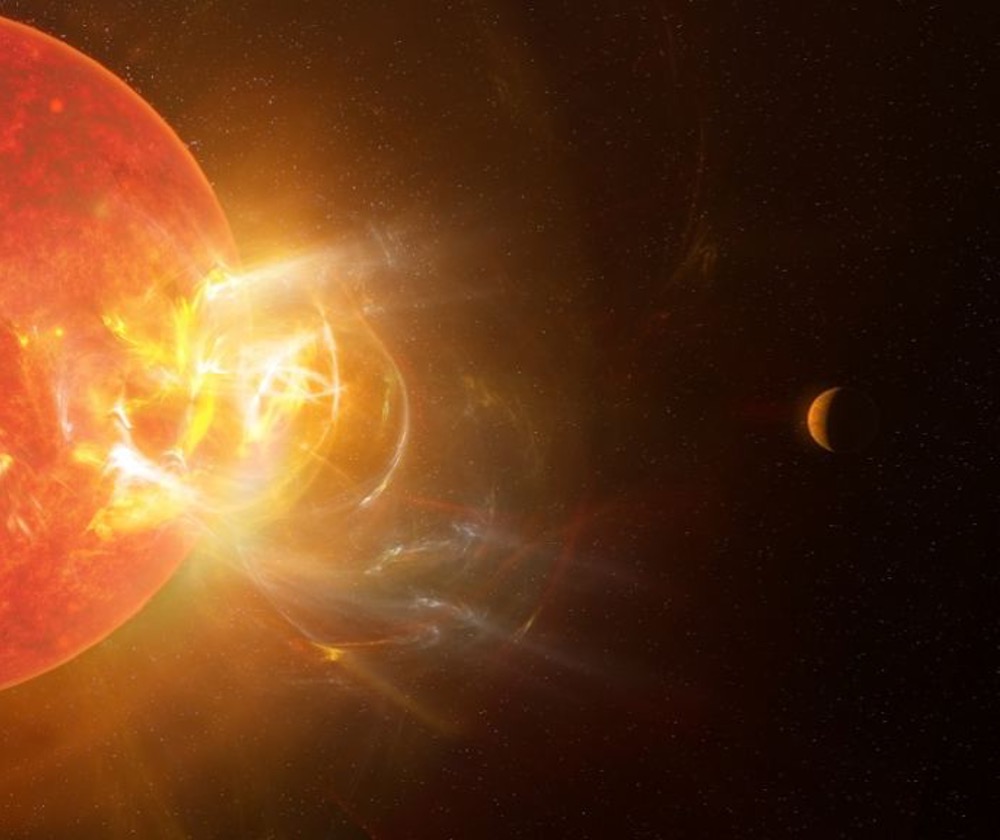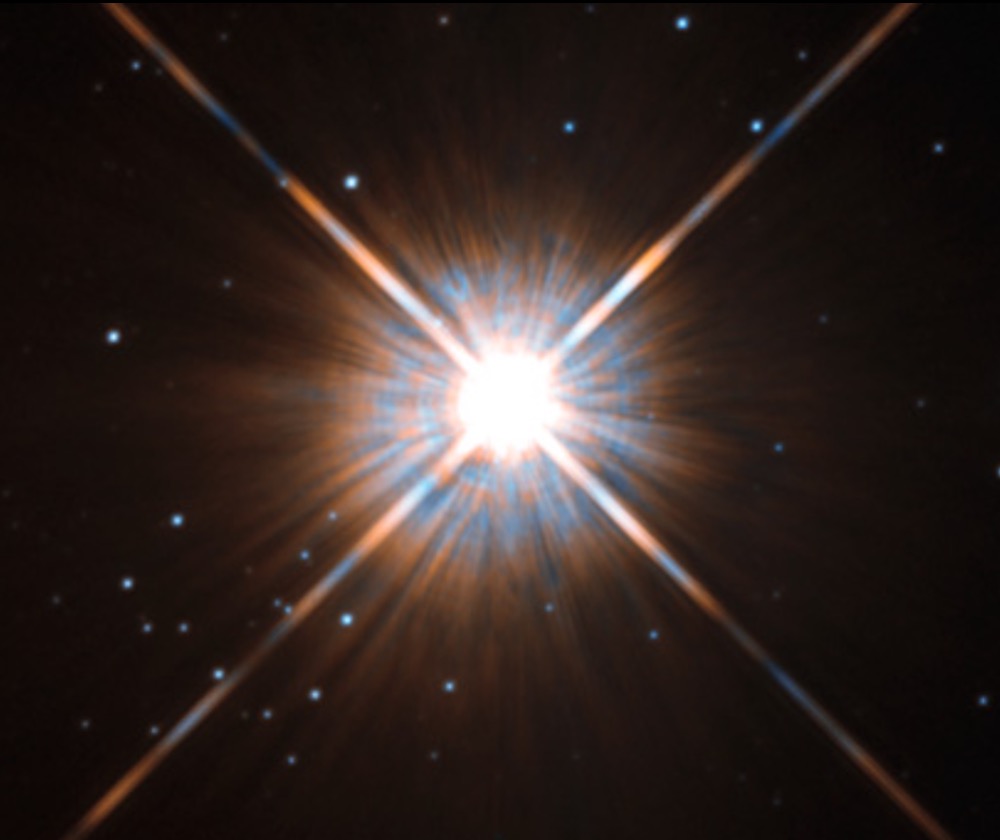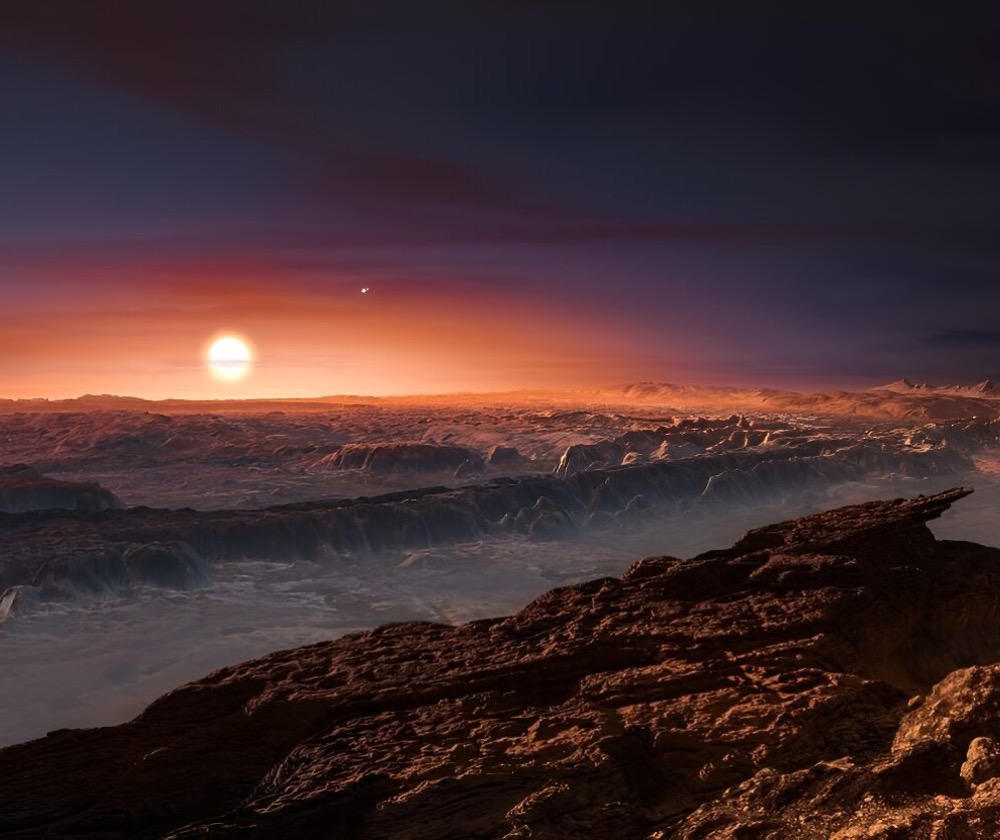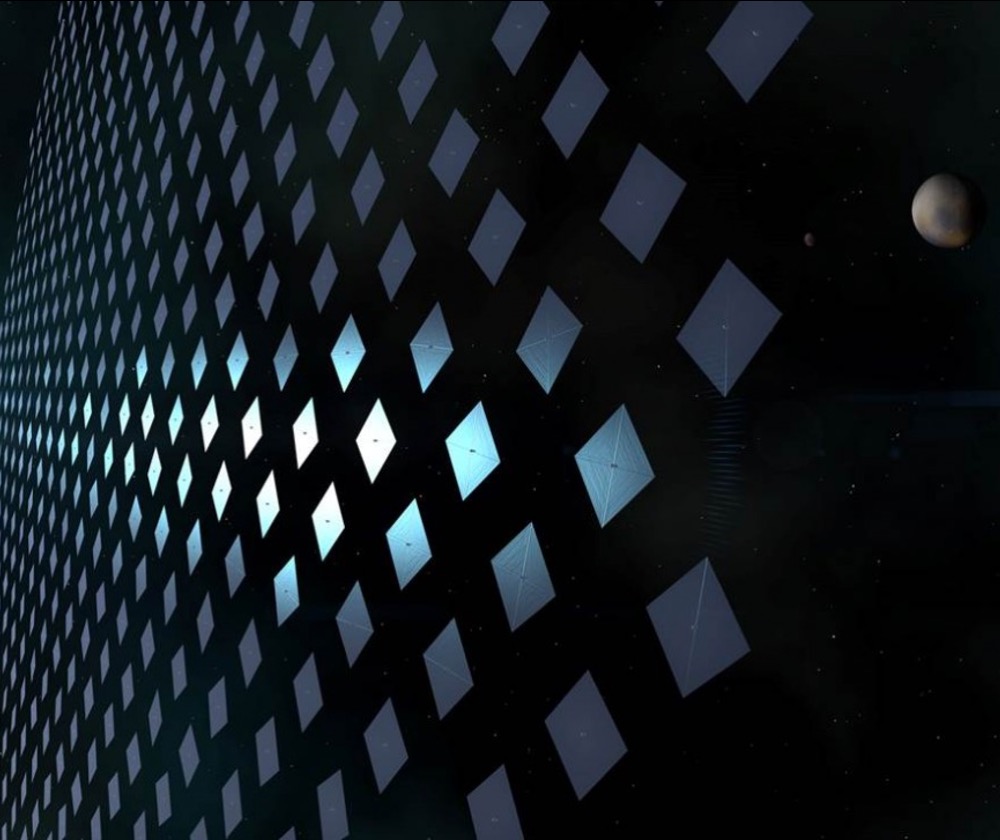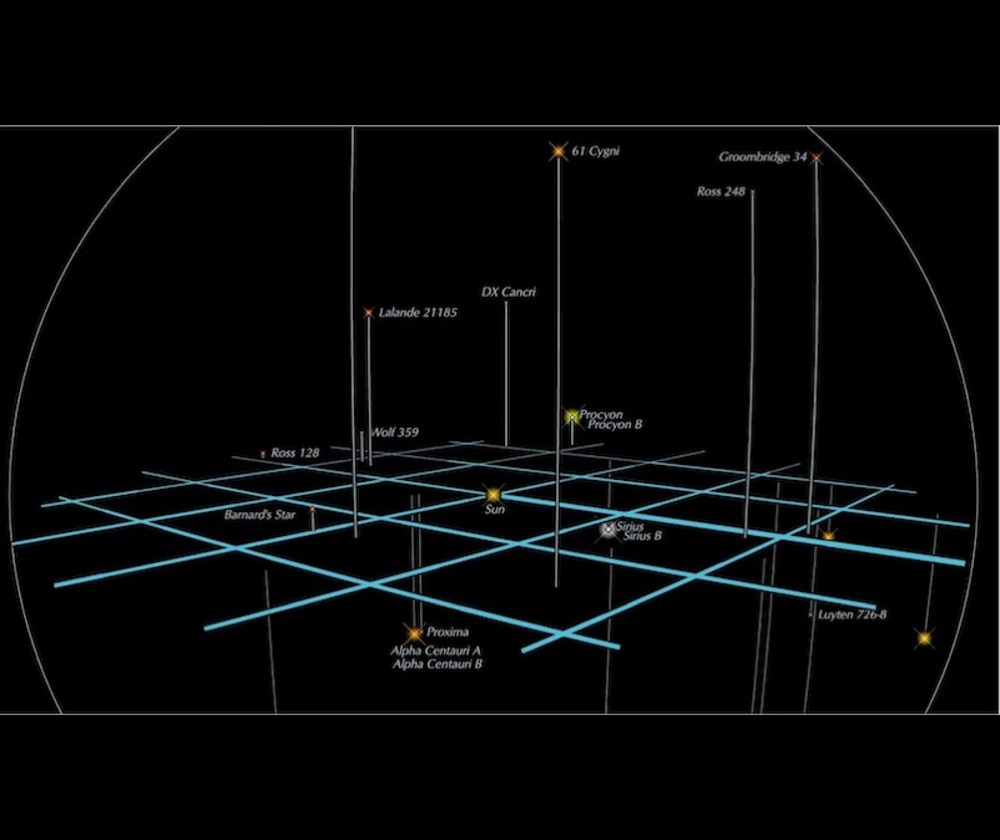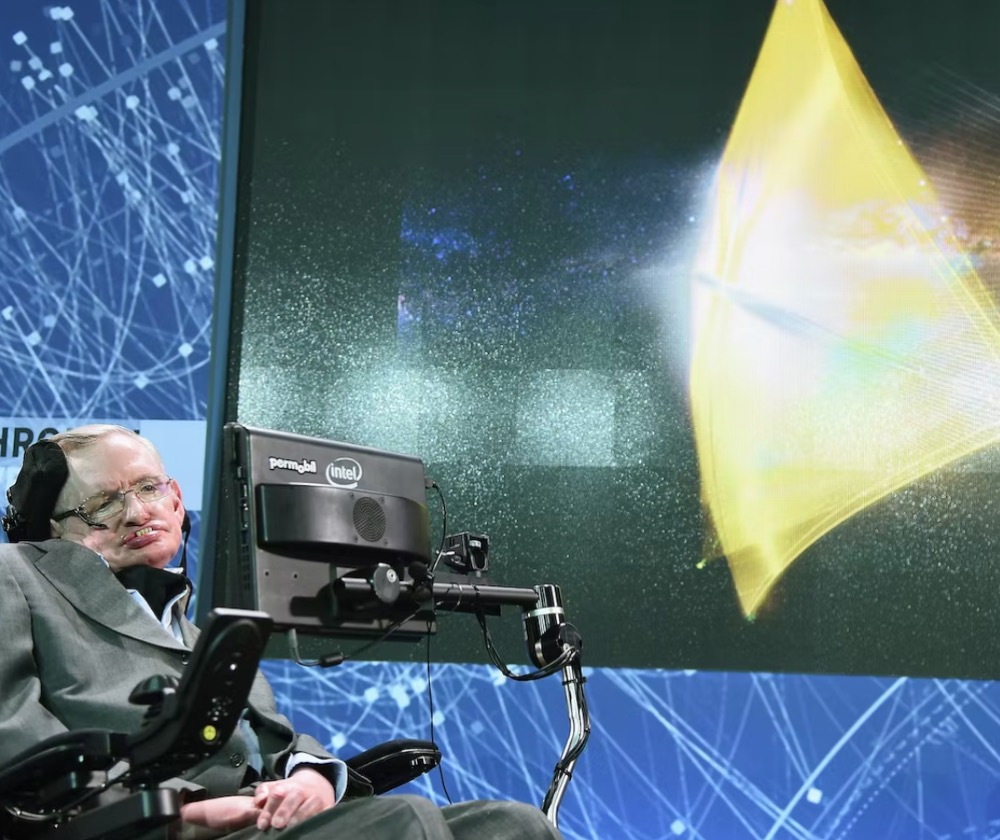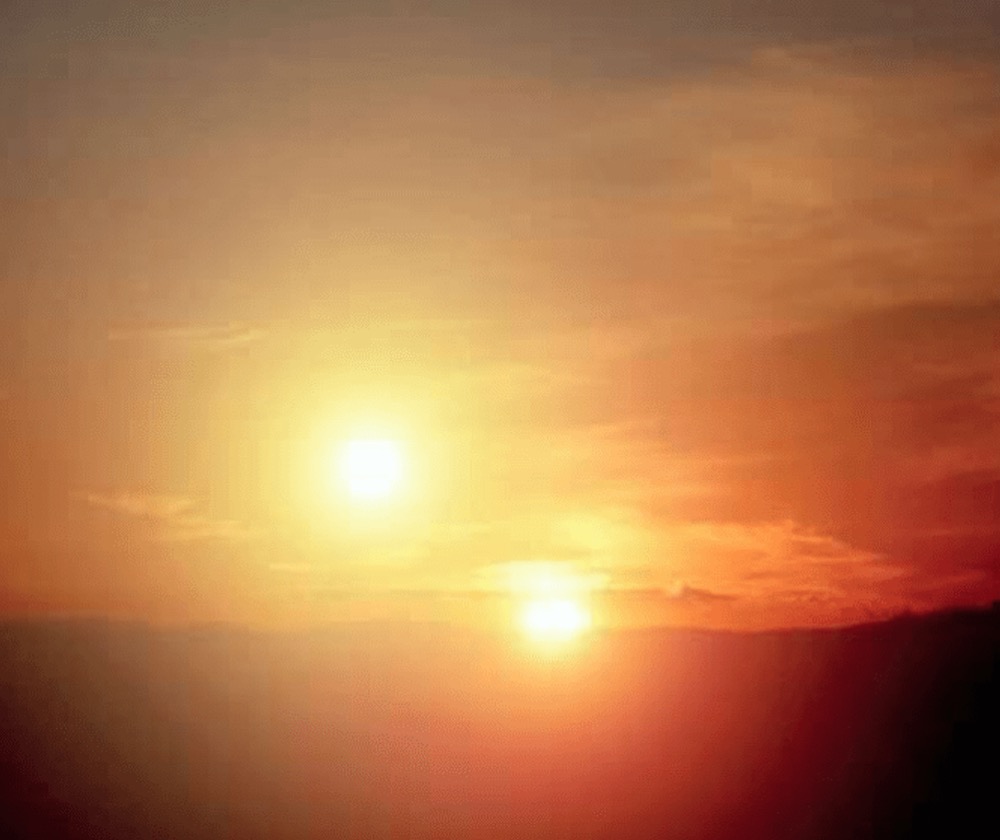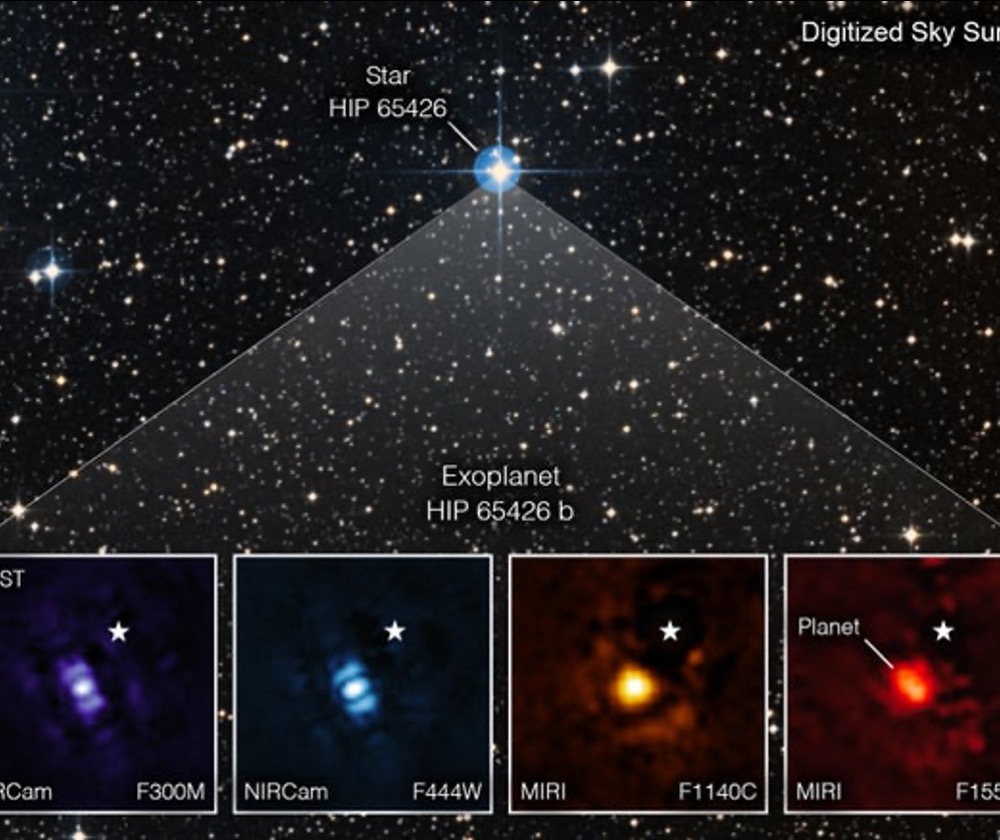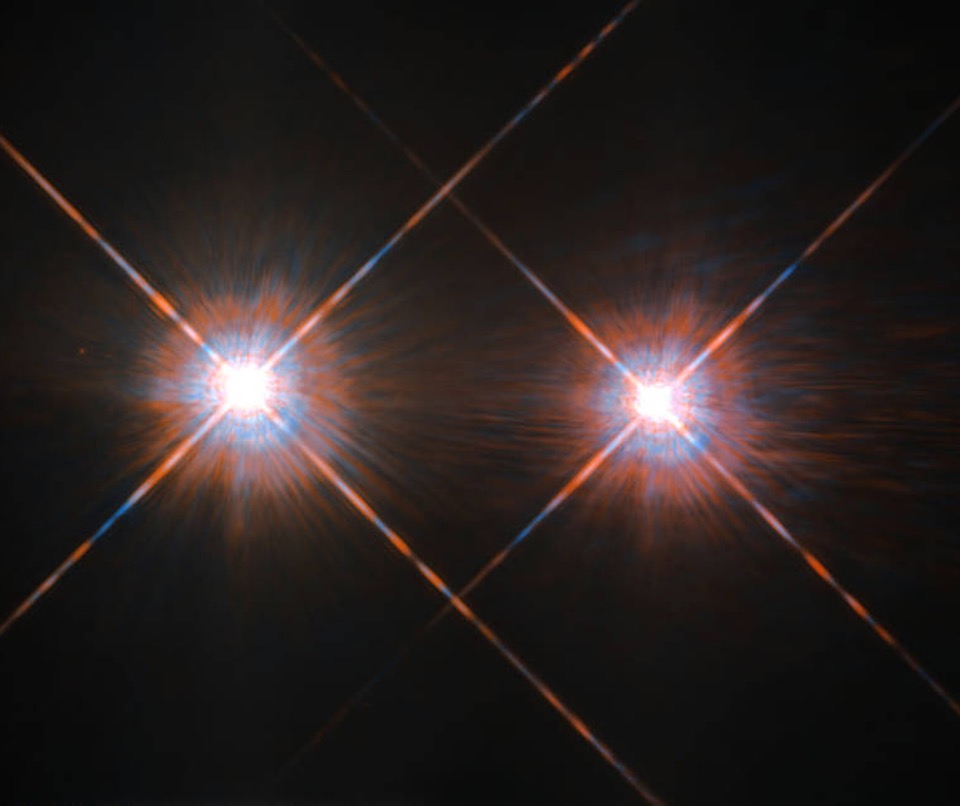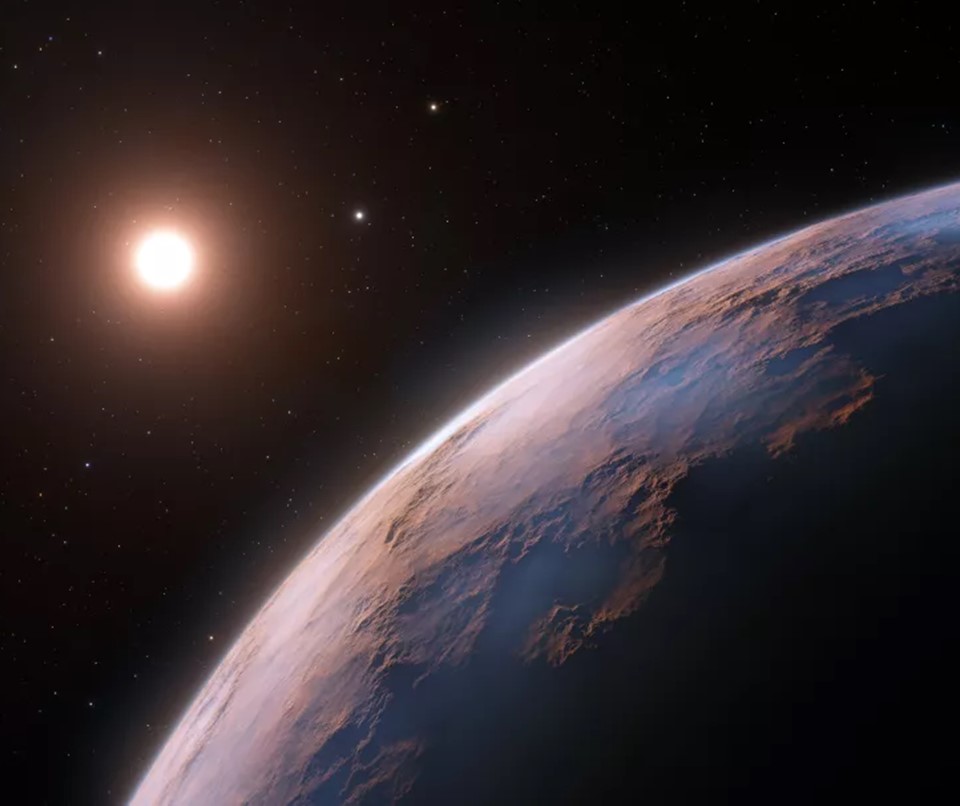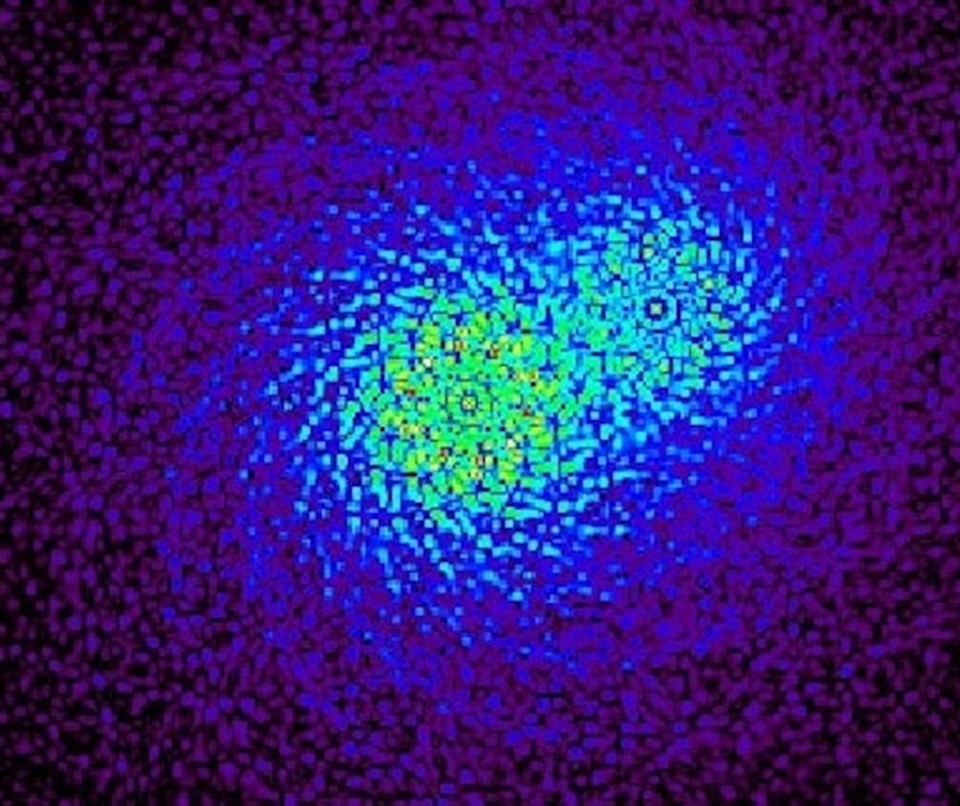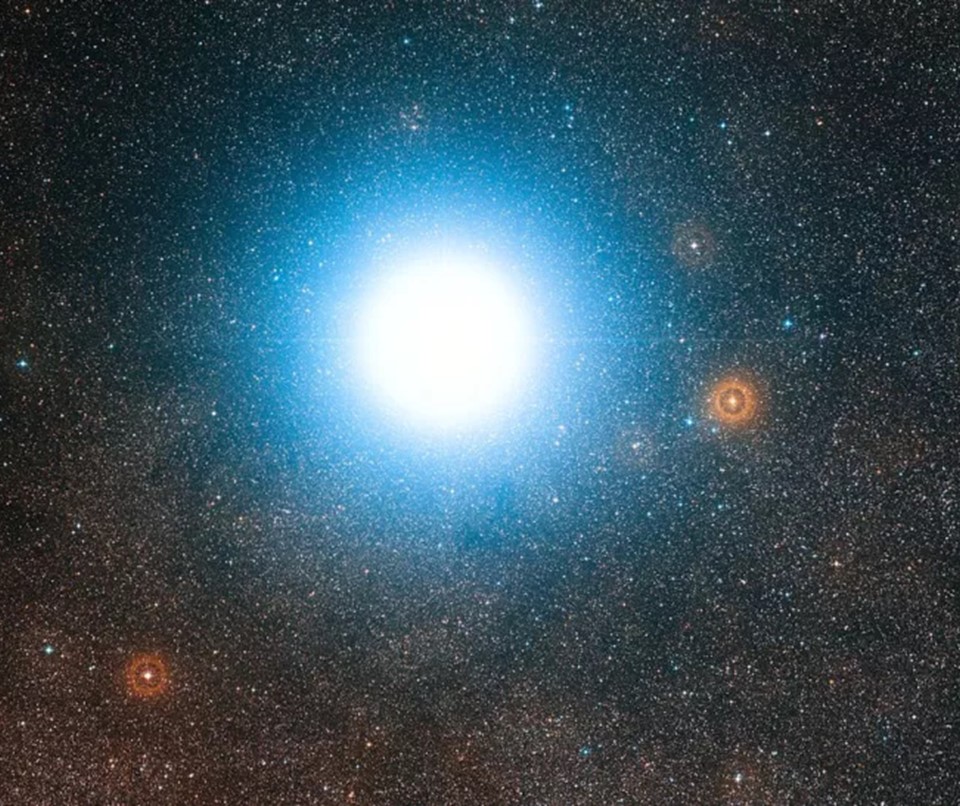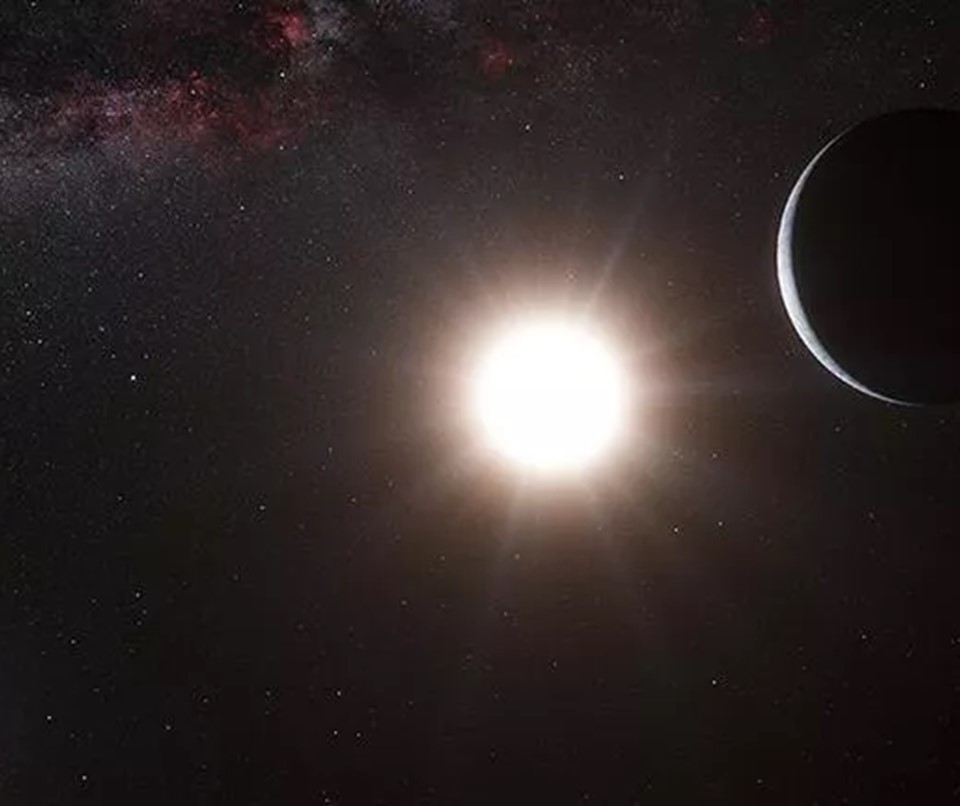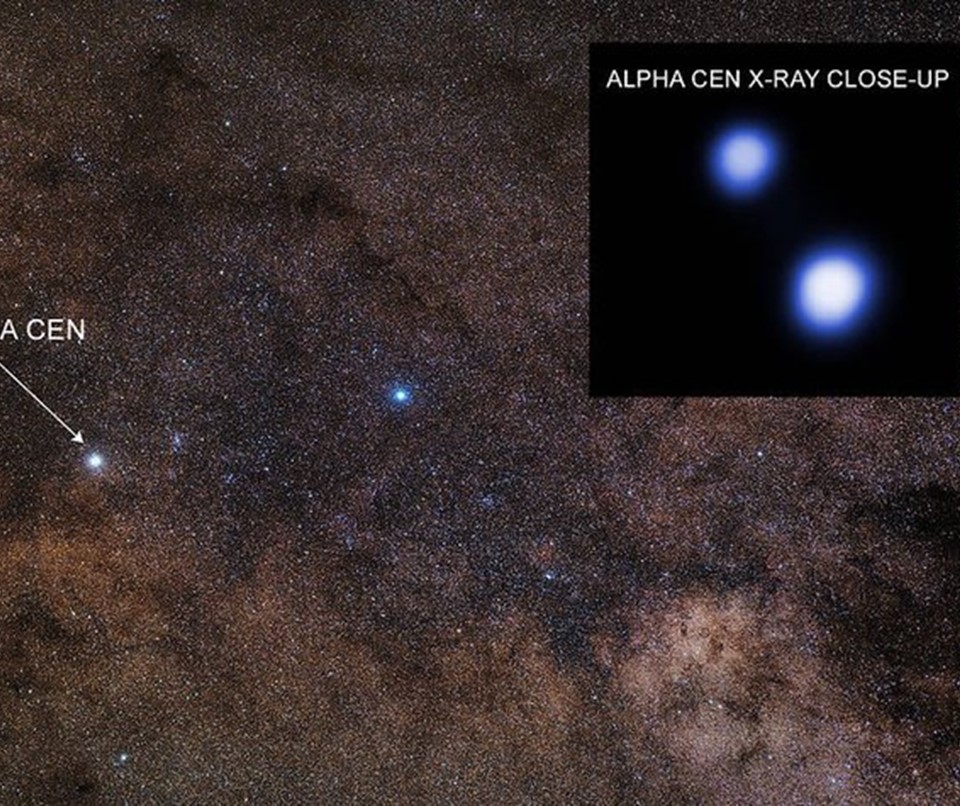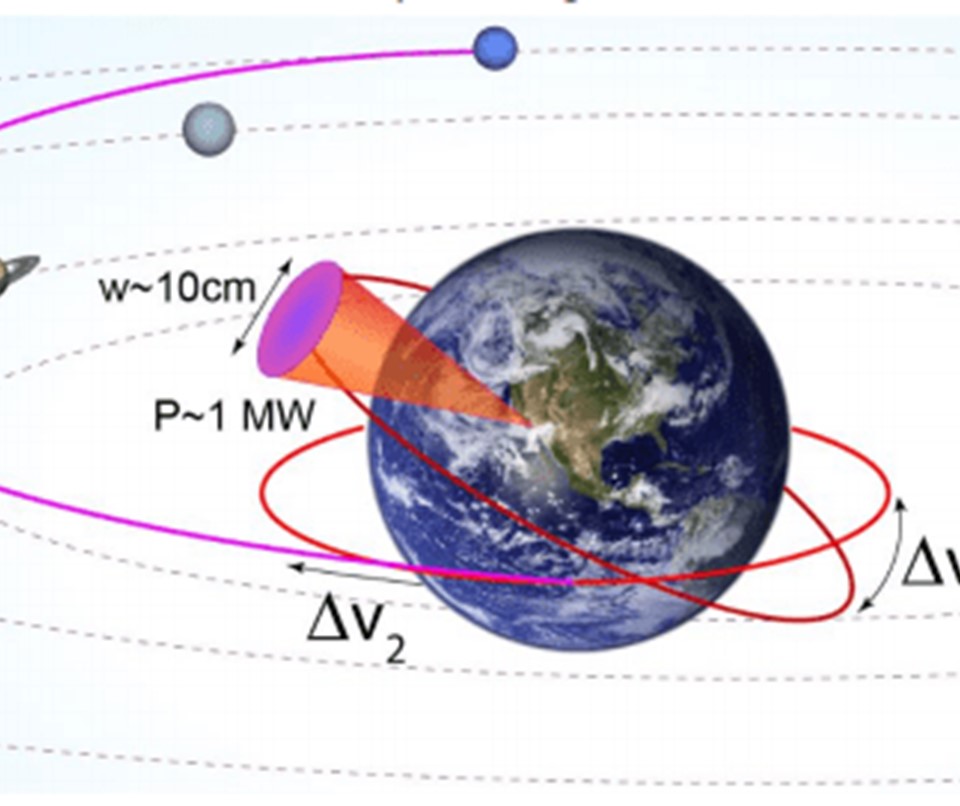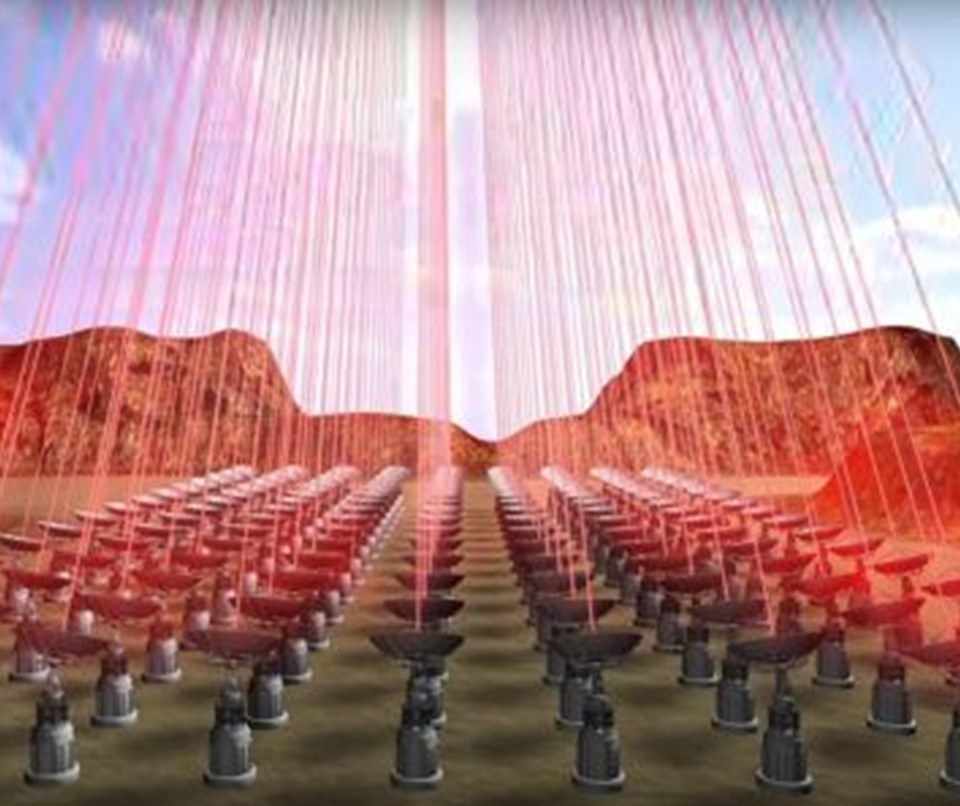ALPHA CENTAURI Our stellar next-door neighbor
Alpha Centauri is the closest star system to the Solar System. It is a triple-star system with multiple planets, officially making it a planetary system. In 2012 the Sagan Planet Walk became the largest exhibit in the world when a new station for Alpha Centauri was added. On the walk's 1-to-5-billion scale, which puts Pluto 1.2 km from the Sun, this station is located at the 'Imiloa Astronomy Center in Hawai'i more than 8,000 km away!
How do planets orbit in a system that has more than one star? In some systems, the stars are close enough together that planets can orbit all the stars at the same time. On these planets, their “suns” would always appear close together in the sky, so as the planet spun they could have day and night cycles like we do. But Alpha Centauri’s three stars are far enough from each other that planets can orbit just one of the stars. We know of two planets around the star Proxima Centauri, a red dwarf star not much larger than Jupiter, and possibly another planet around Alpha Centauri B, a star similar to the Sun. Planets in multi-star systems that orbit an individual star could experience times when they are in between the stars and would not have a nighttime, just continual daytime with changing “suns” in the sky. This situation is the basis for the famous short story by Isaac Asimov, Nightfall, published back in 1941, more than 50 years before the first detection of planets around other stars!
Latest News About Alpha Centauri
Small star, mighty flares: ALMA shares new view of Proxima Centauri
March 27, 2025
A new study offers exciting insights about the particle nature of these flares
Read more
Material from Alpha Centauri may already be here
February 12, 2025
"Interstellar material has been discovered in our solar system, yet its origins are unknown"
Read more
Caltech researchers take first steps toward lightsails
January 31, 2025
Ultrathin thin sails could reach bistant star systems
Read more
Relativistic electron beam could propel probe to Alpha Centauri
January 6, 2025
Beaming technology could be used to push a spacecraft to another star
Read more
Are objects from Alpha Centauri streaming by Earth?
October 18, 2024
A small fraction could reach the Solar System from that nearby system
Read more
Proxima Centauri discovered 109 years ago
October 11, 2024
On October 12, 1915, astronomer Robert Innes announced the discovery of the nearest star to our sun
Read more
The sun is a 'runaway world collector' that can trap passing rogue planets
August 5, 2024
They could be traded like Pokémon cards with neighboring star Alpha Centauri
Read more
A concentrated beam of particles and photons could push us to Proxima Centauri
July 4, 2024
Getting to Proxima Centauri b will take a lot of new technologies
Read more
Alpha Centauri could have a super Jupiter in orbit
July 2, 2024
The gravitational interactions of three bodies are notoriously difficult to predict
Read more
What a swarm of probes can teach us about Proxima Centauri B
April 9, 2024
They must travel at relativistic speeds if we want them to arrive in a reasonable amount of time
Read more
Motion of planetesimals in the Hill sphere of the star Proxima Centauri
February 1, 2024
The results may be of interest for understanding the motion of bodies in other exoplanetary systems
Read more
What could the Extremely Large Telescope see at Proxima Centauri's planet?
January 24, 2024
Proxima Centauri b is the closest exoplanet to Earth, in the habitable zone of a red dwarf star
Read more
Tiny swarming spacecraft could establish communications with Proxima Centauri
September 17, 2023
Achieving interstellar travel has been the dream of countless generations
Read more
Bringing artificial intelligence to the search for habitable planets
August 2, 2023
University partners with Spiral Blue for the TOLIMAN space telescope mission
Read more
Proxima Centauri interstellar flyby scientific Data Downlink Design
July 1, 2023
Issues considered include the interaction between the speed and mass of the probe
Read more
How bright is our sun from other stars?
June 14, 2023
If Alpha Centauri is the 3rd-brightest star in our sky, what is our Sun’s ranking from a planet orbiting it?
Read more
Alpha Centauri planets? TOLIMAN will search
April 6, 2023
It will look for planets in these stars’ habitable zones, where liquid water can exist
Read more
This concept spacecraft could swiftly send a one-ton ship to the edge of the Solar System
January 28, 2023
A new idea envisions a twist on the beam-sail idea
Read more
It’s already hard enough to block a single star’s light to see its planets. But binary stars? Yikes
January 27, 2023
Up to 85% of Milky Way stars may be in binary systems
Read more
Extraterrestrial signal search is underway using the southern hemisphere’s biggest radio telescope
December 1, 2022
The new search expands the number of targets searched by a factor of 1,000
Read more
JWST’s first exoplanet images forecast a bright future
September 22, 2022
Next summer, they will use direct imaging to look for planets within our nearest star system, Alpha Centauri
Read more
NASA rockets launch from Australia to seek habitable star conditions
June 27, 2022
Preliminary analysis shows that good data was received
Read more
This new propulsion system will take a spacecraft to Alpha Centauri in just 20 years
March 13, 2022
Breakthrough Starshot, an international scientific effort, has revealed their plans
Read more
Possible 3rd planet spotted around Proxima Centauri, the sun's nearest neighbor star
February 10, 2022
The candidate planet Proxima d is estimated to be just 25% as massive as Earth.
Read more
A lightsail powered by millions of lasers could reach Alpha Centauri in 20 years
December 7, 2021
We're edging closer to interstellar reality.
Read more
Nearby habitable planets at Alpha Centauri?
November 30, 2021
Could there be habitable planets – or even life itself – in the star system nearest to our sun?
Read more
Mysterious radio signal from Proxima Centauri was definitely not aliens
October 26, 2021
The signal appears to have an Earthly origin.
Read more
How do 'Tatooine' planets survive with 2 suns?
June 28, 2021
It's hard for an exoplanet to establish itself in a neighborhood built around not one but two stars
Read more
Talking to Alpha Centauri - still a long way off
June 27, 2021
A very theoretical look at the challenge of communicating with our nearest star cluster
Read more
Forget about interstellar flights. Tiny light sails cold be used to explore the Solar System today
June 24, 2021
Solar sails have been receiving a lot of attention lately.
Read more
Sending a spacecraft to another star will require a million lasers working together
June 10, 2021
In 2016, billionaire Yuri Milner founded Breakthrough Initiatives
Read more
Fascinating Facts About Alpha Centauri
- Alpha Centauri is a star system about 4.2 lightyears away from the Solar System with three stars: Alpha Centauri A, Alpha Centauri B and Alpha Centauri C. That last star is also known as Proxima Centauri as it is currently the closest one to us. Since the three stars all orbit around each other, that will not always be the case.
- To the naked eye, the Alpha Centauri system appears as a single star with an apparent brightness that makes it the third brightest star in the sky. On its own, Alpha Centauri A, the largest and brightest of the three, would be the fourth brightest star.
- Planets Proxima b and the recently discovered Proxima c orbit the star Proxima Centauri. There have been two possible detections of planets orbiting Alpha Centauri B. One of these has since been dismissed as a false detection, while the other is still under investigation.
- Alpha Centauri A is a little larger than the Sun and about 50% brighter. Alpha Centauri B is an orange star that is slightly smaller than our Sun and only 45% as bright. Proxima Centauri is a red dwarf about seven times smaller than our Sun and 20,000 times dimmer, and so it can only be seen with a telescope.
- All three stars of Alpha Centauri were "born" together and are 4.85 billion years old, making them older than the Sun (4.6 billion years old).
- Alpha Centauri A and B orbit each other at an average distance about the same as the distance from the Sun to Uranus, and each orbit takes 80 years. Proxima Centauri is much farther away, about 650 times the distance between A and B, and so it orbits these two stars together as if they were one, and each orbit takes about 550,000 years.
- Voyager 1 is currently traveling at about 61,000 kilometers per hour. At this speed, if the spacecraft were aimed at Alpha Centauri, it would take about 75,000 years to reach the system. Yuri Milner and Stephen Hawking proposed the $100 million project Breakthrough Starshot to develop a laser-propelled nanocraft that could travel up to 20 percent of the speed of light. The mission would reach Alpha Centauri in 20 years from its launch, and then it would be another 4 years before the signal was received back at Earth.





